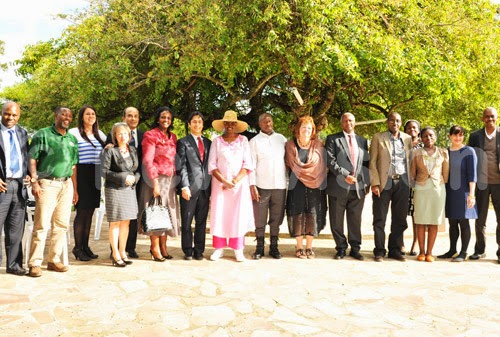Gorilla tourism in Rwanda, Uganda and Congo evolved around the Virunga ranges of Muhavura, Mgahinga and Sabinyo. Around these mountain lies the Parc National des Volcans one of Africa’s oldest park, the park was made famous by Dian Fossey and her efforts to protect its endangered mountain gorillas, founded in 1925 when the countries of Rwanda and Congo were under Belgian rule and named Parc National Albert after the Belgian monarch, however since the independence of the two countries in 1962 the park was separated into the existing two that is Parc des Volcans in Rwanda and des Virunga in Congo.
The
foundation of the Parc national Albert
was instigated by Carl Ethan Akeley, a renowned American museum collector who
visited the Virungas in 1921 and was alarmed at the extent of gorilla hunting.
The next notable gorilla conservationist, Walter Baumgartel who also
established the Kisoro Traveler's rest hotel as a base for tourist and
researchers, that a one George Schaller conducted the pioneering 1960 study
which did so much to dispel the prevailing perception of gorillas as mindlessly
aggressive and violent creatures.
That the
gorillas,
despite their fearsome appearance are among the most peaceable of primates was
confirmed by a more comprehensive behavioral study initiated by Dian Fossey in 1963, mentored by the paleontologist
Dr Louis Leakey who believed that the study of these Apes would cast
light on the relationship between the great apes and early hominid ancestors.
During
one of his lectures while on tour in United States of America Dr Leakey was
approached by Dian who volunteered to participate in the project and so Fossey
set out to habituating the gorillas in the Parc des Volcans, enabling her to monitor their
behaviors at close range. The active and arguably vindictive role she played in
apprehending and punishing gorilla poachers almost certainly lay behind her
brutal and unsolved murder in the park in 1985. She was laid to rest on
Karisoke Mountain research center among some of her beloved gorillas and as
from 2002 tourist can hike to her tomb; her legacy is still carried on through
the Dian Fossey Gorilla fund and her book Gorillas in the mist.
In 1979,
Amy Vedder and Bill Webber initiated a pioneering project in which controlled
tourist visits to the habituated gorillas of the Parc des Volcans were used to
fund local environmental education and anti poaching patrols. Initially
controversial, gorilla tourism proved to be an unqualified success and by mid
1980 it was entrenched as Rwanda third highest earner of foreign revenue. The
income generated by gorilla tourism revolutionized official and local
perceptions of the great apes, leading to sharp decrease in poaching as
highlighted by the 1989 census which indicated a 30% increase since 1979.
Tourist
activities within the Parc des Volcans
were suspended during the civil war in 1991, researchers and rangers were
forced to evacuate the park putting the future of the gorillas in jeopardy,
surprisingly after the war when the researchers returned only four gorillas
could not be accounted for, however it is believed that these could have
succumbed to natural death since they had advanced in age. The Parc des Volcans
resumed operations in 1999 and ever since there has been no back tracking, the
most famous groups being Susa and Sabinyo.




